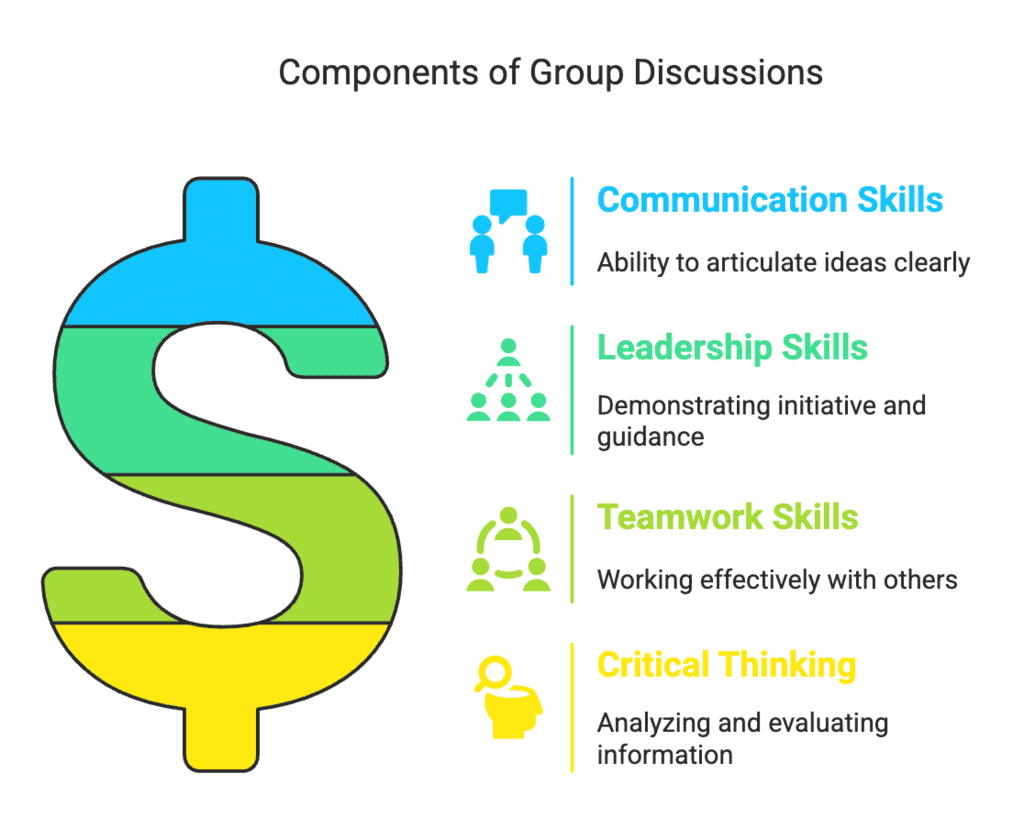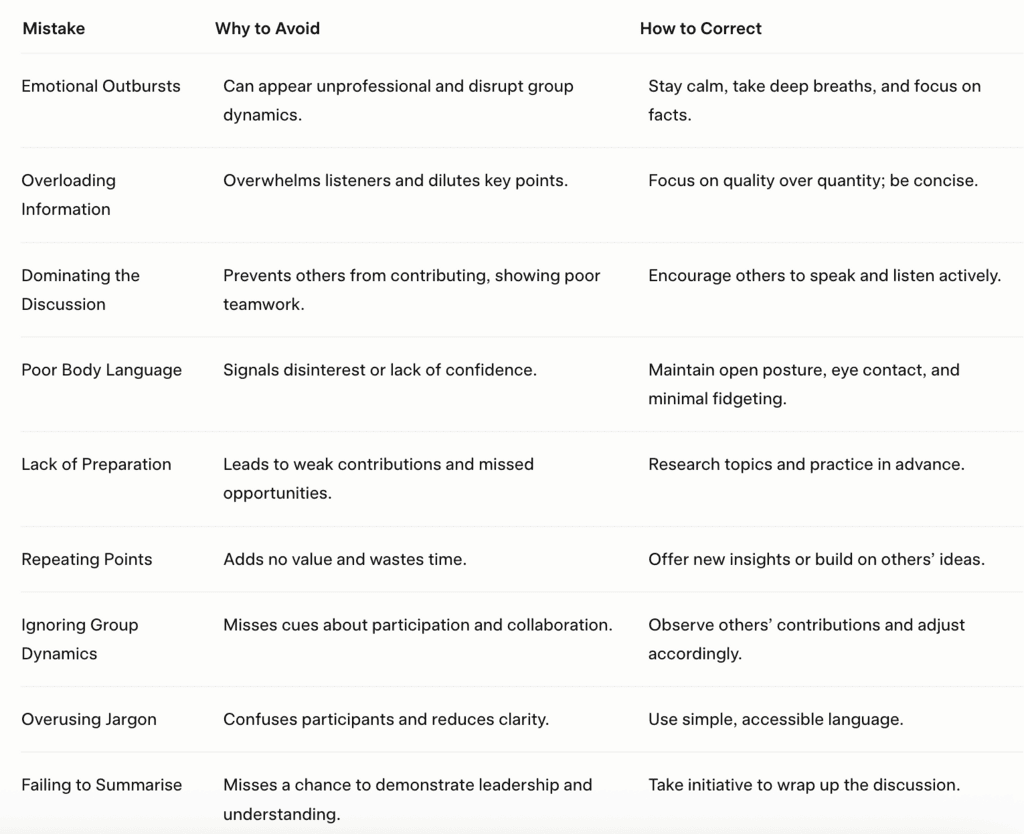Tips and Tricks: Group Discussions | CAT Interview Preparation Guide PDF Download
Group discussions (GDs) are a pivotal evaluation tool used in job interviews and academic admissions, particularly for management programs like MBAs. Typically involving 8-12 participants discussing a topic for 15-30 minutes, GDs assess critical skills such as communication, leadership, teamwork, and critical thinking. Employers and institutions, such as those hiring for IT roles or admitting students to top B-schools, use GDs to identify candidates who can articulate ideas, collaborate effectively, and demonstrate managerial potential.

Tip 1: Starting the Discussion
Initiating a GD can set a positive tone and showcase leadership:
Take the Lead (If Prepared)
If you have a strong grasp of the topic, start the discussion by summarizing the agenda or posing a thoughtful question. For example, "Let’s begin by exploring the pros and cons of [topic]." This demonstrates initiative and clarity.Listen First (If Unsure)
If you’re uncertain, listen to others’ opening remarks to gather insights before contributing. This shows patience and strategic thinking.Engage the Group
Share relevant examples or ask questions to involve others, such as, "What does everyone think about the economic impact of this issue?"
Tip 2: Participating Effectively
Active and meaningful participation is key to standing out. Here are essential tips:
Communicate Assertively
Express your ideas confidently but respectfully, using phrases like "From another perspective…" or "Building on that point…" Make multiple contributions to show engagement, but avoid dominating the conversation.Active Listening
Listen attentively, nodding or making eye contact to show respect. Avoid interrupting, and ask clarifying questions if needed, such as, "Could you elaborate on that point?" This fosters collaboration and demonstrates empathy.Stay on Topic
If the discussion veers off, politely redirect it. For example, "That’s an interesting angle, but let’s focus on [topic]." This highlights leadership and focus.Support with Examples
Use specific examples or data to strengthen your arguments. For instance, instead of saying, "Technology impacts education," say, "Platforms like Zoom enabled 80% of schools to continue classes during the pandemic."Manage Time
Be mindful of the time limit (typically 15-30 minutes). Encourage quieter participants to share by saying, "I’d love to hear [name]’s thoughts on this." This shows inclusivity and time management skills.Resolve Conflicts
If disagreements arise, focus on the issue, not the person. Find common ground by saying, "I see your point, but let’s consider how both perspectives align." This demonstrates maturity and teamwork.
Tip 3: Master Communication Skills
Effective communication is critical for making an impact:
Clarity and Conciseness
Structure your points logically and avoid jargon. For example, say, "There are three reasons why [topic] matters: first, [reason 1]; second, [reason 2]; third, [reason 3]." This ensures your ideas are easy to follow.Moderate Tone and Volume
Speak in a calm, confident tone at an appropriate volume. Avoid sounding aggressive or overly soft, as this can undermine your credibility.Engage Others
Respond to others’ points and invite quieter participants to contribute, fostering a collaborative atmosphere.
Tip 4: Use Non-Verbal Cues
Non-verbal cues or your body language significantly influence how you’re perceived:
Professional Appearance
Dress appropriately, as it reflects your seriousness and professionalism. Opt for business casual unless specified otherwise.Posture and Gestures
Sit straight with an open posture, and use gestures to emphasise points without overdoing it. Avoid fidgeting or crossing arms, which can signal defensiveness.Eye Contact
Maintain eye contact with participants to show confidence and engagement. Follow the 50/70 rule: make eye contact 50% of the time while speaking and 70% while listening.
Tip 5: Speak to be Remembered
A strong conclusion can leave a lasting impression:
Summarise Impartially
Take the lead in summarising key points, ensuring you capture all major arguments. For example, "To wrap up, we discussed [key points], with a consensus on [conclusion]." This shows a comprehensive understanding.Reiterate Your Stance
If appropriate, briefly restate your position to reinforce your contribution, such as, "I believe [stance] because of [reason]."
Common Mistakes to Avoid

Additional Tips
Practice with Mock GDs
Join public speaking clubs or online forums to simulate GD scenarios, improving your confidence and adaptability.Learn Key Phrases
Use phrases like "I agree to some extent, but…" or "I’d like to interrupt politely to add…" to navigate discussions smoothly.Stay Calm Under Pressure
Use positive self-talk and embrace brief silences to avoid rushed responses, maintaining composure.
|
21 videos|18 docs
|
FAQs on Tips and Tricks: Group Discussions - CAT Interview Preparation Guide
| 1. What are the key tips for starting a group discussion effectively? |  |
| 2. How can I participate effectively in a group discussion? |  |
| 3. What communication skills are essential for success in group discussions? |  |
| 4. How do non-verbal cues impact group discussions? |  |
| 5. What common mistakes should I avoid during a group discussion? |  |





















